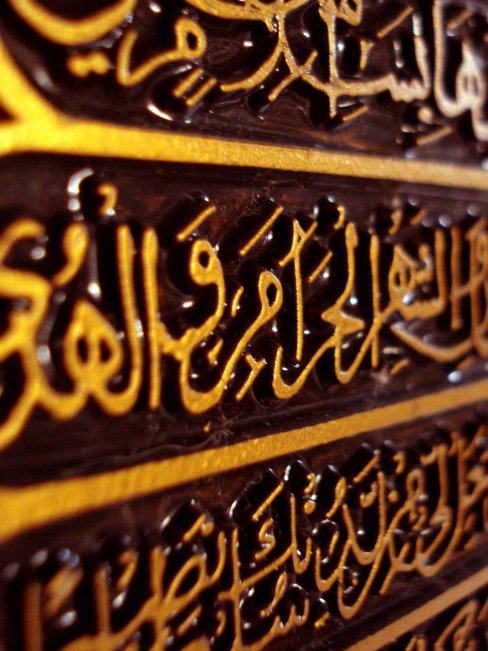This is post #29 in our series on Tafseer of Juz ‘Amma (click the link to see all posts in this series).

Continuing our discussion of Surah At-Teen, we’re going to insha’Allah dive into the Arabic analysis. It’s surprising how much subhanallah you can understand with only a partial learning/understanding; but didn’t Allah say that it’s a clear, easy to read book? Subhanallah!
Allah says, in Surah At-Teen:
وَالتِّينِ وَالزَّيْتُونِ
وَطُورِ سِينِينَ
وَهَذَا الْبَلَدِ الْأَمِينِ
لَقَدْ خَلَقْنَا الْإِنسَانَ فِي أَحْسَنِ تَقْوِيمٍ
ثُمَّ رَدَدْنَاهُ أَسْفَلَ سَافِلِينَ
إِلَّا الَّذِينَ آمَنُوا وَعَمِلُوا الصَّالِحَاتِ فَلَهُمْ أَجْرٌ غَيْرُ مَمْنُونٍ
فَمَا يُكَذِّبُكَ بَعْدُ بِالدِّينِ
أَلَيْسَ اللَّهُ بِأَحْكَمِ الْحَاكِمِينَ
So let’s do a word-for-word breakdown.
- Wa (وَ): Commonly translated as “and,” this is a different waw–it’s waw-ul-qasam, the waw of swearing. Just like how in English, you say “I swear by X…” or “By X!”, same meaning here. The thing sworn by is majroor (with kasra, usually).
- At-Teeni (التِّينِ): The fig. Not one particular fig; as we mentioned, in Arabic, you can put alif-lam in front of something and use that to represent a whole species or class of objects. It’s majroor (with kasra–teeni, not teenu or teena) because it’s what the thing sworn by.
- Waz-Zaytoon (وَالزَّيْتُونِ): Same as above, except for olives. Did you know an olive tree takes about 60 years to grow?
- Wat-Toori Sineen (وَطُورِ سِينِينَ): This is an interesting grammatical phrase. Toori is definite (single tanween) without alif-laam–becuase it’s mudaf (possessor). Sineen also has single tanween, and fatha! Why fatha, and not kasra, if it’s the mudaaf ilayh (thing possessed)? And why know alif-laam? The answer is, Allahu ‘alam, because it’s mamnoo’ min as-sarf, an irregular word, because it’s a foreign-root Arabized word. You can read more about this wierd class of words on Arabic Tree; Mamnoo’ min As-Sarf words show majroor state with fatha.
- Wa Haadhaa Al-Baladi Al-Ameen (وَهَذَا الْبَلَدِ الْأَمِينِ): Same waw-u-qasam here. Hadhaa followed by a regular word with alif-lam is badal, the thing that stands in place of something else. You’ll notice haadhaa doesn’t take kasra–it bounces it to al-balad, because it’s badal. More on that at Arabic Tree. al-ameen, if you notice, has the same a) alif-lam (definitiveness), b) number (singular), c) gender (masculine), and d) case (majroor) as balad–because it’s an adjective. Al-Balad Al-Ameen means “the secure/trustworthy/ameen city.”
- La Qad (لَقَدْ): Allah just testified four times. And now la is a particle of emphasis. And qad is a particle of emphasis. Talk about pouring on the emphasis! That’s like 4+2 emphasis phrases in just a few verses!
- Khalaqnaa (خَلَقْنَا): This is the plural, past-tense form of the verb khalaqa. Khalaqa means to create out of nothing, which is an attribute of Allah only–nobody else can create out of nothing. And the “We” here refers to Allah–it’s what we call “The Royal We” in English. Ibnul-Qayyim or Ibn Tamiyyah, rahimahumaallah, also mentioned that whenever Allah mentions himself in the Royal We, it means something He can (or did?) do with the angels, like setting up the universe.
- Al-Insaan (الْإِنسَانَ): The human race. Al-Insaan is mansoob, with fatha, because it’s maf’ool bihi, the thing that’s created, the recipient of the verb khalaqnaa.
- Fiy (فِي): Fiy is a preposition usually meaning “in;” it’s modifying khalaqnaa. Fiy makes the thing it’s modifying (the thing that’s in something) majroor.
- Ahsani Taqweemin (أَحْسَنِ تَقْوِيمٍ): Ahsani is the superlative; it’s on the pattern of af’alu, and is followed by the mudaaf ilayh; so we know it’s a superlative. It means “best.” Taqweem is “form.” This pair is an ‘idaafah (possessive) case–“the best of (a) form.” And ahsanu is also majroor because of fiy.
- Thumma (ثُمَّ): A particle of time. It means “then.” It implies that a period of time has passed–unlike fa, which implies almost immediately something happening.
- Radadnaa hu (رَدَدْنَاهُ): Radadnaa is on the same pattern as khalaqnaa–Allah is doing something, past-tense. Hu is the maf’ool bihi, the recipient of the verb; it refers to Al-Insaan from earlier.
- Asfala As-Saafileen (أَسْفَلَ سَافِلِينَ): This is another superlative case; see the pattern af’alu (asfala) and the mudaaf ilayh, as-saafileen; it means “the lowest of the low ones.”
- ‘Amliuw (عَمِلُوا): ‘Amiluw is a past-tense, masculine, plural word (can refer to a mixed group too, gender-wise); it means “they did.” ‘Amliuw is to do something with intention; unlike fa’alauw, which can include things like blinking. ‘Amiluw is best translated as “worked,” then, not “did.”
- As-Saalihaat (الصَّالِحَاتِ): As-Saalihaat is a feminine plural (evidence: the alif-taa at the end). It means, righteous deeds (plural). Notice that even though it’s the maf’ool bihi (recipient of the verb) of ‘amiluw, it shows kasra–because sound feminine plural words show mansoob with kasra, not with fathaa. That’s why Allah says, “khalaqa as-samawaati” and not “khalaqa as-samawaata!” Again, there’s a decent article you can read on it at Arabic Tree.
For the last verse, I’m going to again refer to an existing post on Arabic Tree for the sake of berevity.
Wallahu ta’ala ‘alam.
References:
- Touched by an Angel: Tafseer of Juz ‘Amma. By Muhammad Alshareef. 2009.